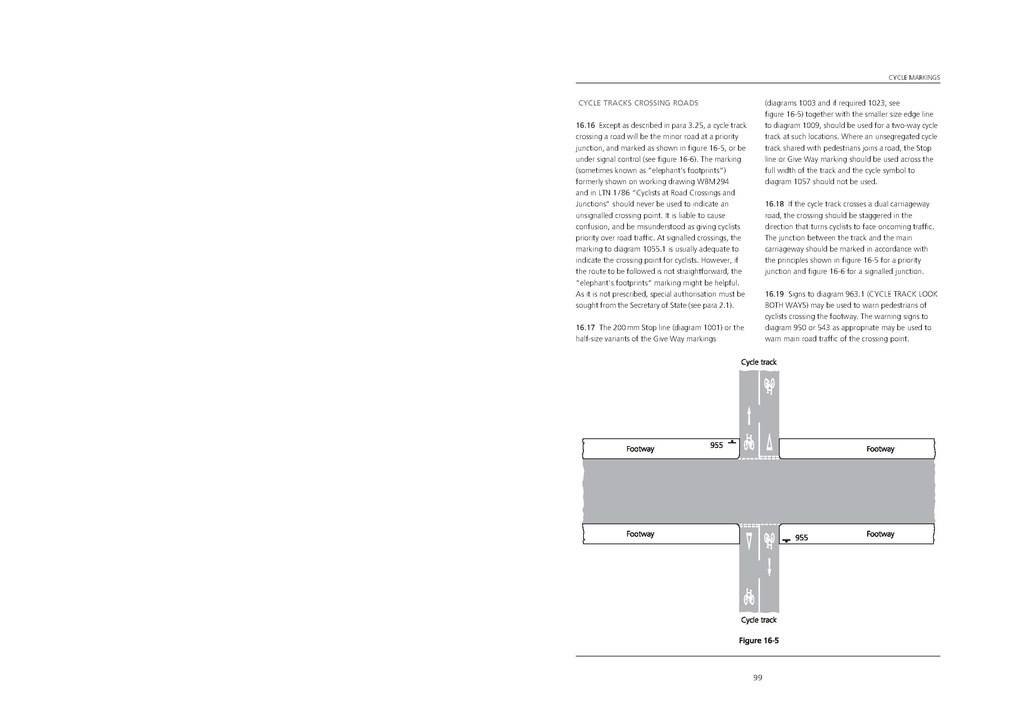CYCLE TRACKS CROSSING ROADS
16.16 Except as described in para 3.25, a cycle track crossing a road will be the minor road at a priority junction, and marked as shown in figure 16-5, or be under signal control (see figure 16-6). The marking (sometimes known as "elephant's footprints") formerly shown on working drawing WBM 294 and in LTN 1 / 86 "Cyclists at Road Crossings and Junctions" should never be used to indicate an unsignalled crossing point. It is liable to cause confusion, and be misunderstood as giving cyclists priority over road traffic. At signalled crossings, the marking to diagram 1055.1 is usually adequate to indicate the crossing point for cyclists. However, if the route to be followed is not straightforward, the "elephant's footprints" marking might be helpful. As it is not prescribed, special authorisation must be sought from the Secretary of State (see para 2.1).
16.17 The 200 mm Stop line (diagram 1001) or the half-size variants of the Give Way markings (diagrams 1003 and if required 1023, see figure 16-5) together with the smaller size edge line to diagram 1009, should be used for a two-way cycle track at such locations. Where an unsegregated cycle track shared with pedestrians joins a road, the Stop line or Give Way marking should be used across the full width of the track and the cycle symbol to diagram 1057 should not be used.
16.18 If the cycle track crosses a dual carriageway road, the crossing should be staggered in the direction that turns cyclists to face oncoming traffic. The junction between the track and the main carriageway should be marked in accordance with the principles shown in figure 16-5 for a priority junction and figure 16-6 for a signalled junction.
16.19 Signs to diagram 963.1 (CYCLE TRACK LOOK BOTH WAYS) may be used to warn pedestrians of cyclists crossing the footway. The warning signs to diagram 950 or 543 as appropriate may be used to warn main road traffic of the crossing point.

99
